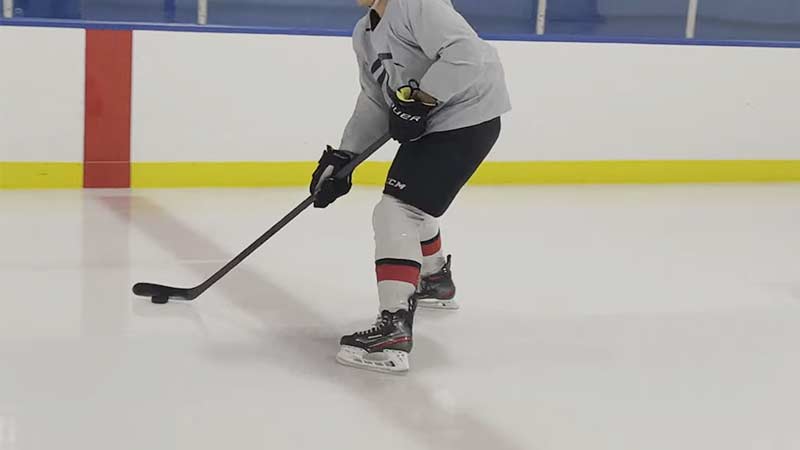In ice hockey, the term “long change” holds a significant impact on gameplay during the second period and overtime. This crucial period occurs when the goalies switch sides, resulting in each team’s bench being farther away from their goal.
The long change poses a strategic challenge for teams as it complicates quick player substitutions and can leave them vulnerable to conceding goals.
Defensive players, in particular, face the task of skating across the ice to reach their positions during this transition, exposing the goalie to increased risks.
Understanding the dynamics of the long change in hockey is essential for players and coaches to navigate this critical phase of the game effectively.
As teams adapt to the challenges posed by the long change, strategic decisions and quick player rotations become vital to maintaining defensive stability and seizing scoring opportunities.
Understanding the Long Change in Hockey
The Basics of Line Changes in Hockey
In ice hockey, line changes are strategic substitutions of players on the ice to maintain energy levels and team coordination.
Teams have four forward lines and three defensive pairings that rotate during a game. Players exiting the ice go to the bench, replaced by fresh players jumping onto the ice for seamless transitions.
These quick changes are crucial for maintaining intensity and strategic positioning, contributing to a team’s success in the game.
How the Long Change Differs from Normal Shifts?
The long change in hockey occurs during the second period and overtime when teams’ benches are farther from their defensive zones.
This positioning can impact strategic decisions, requiring careful line changes to avoid counterattacks and capitalize on scoring chances.
Coaches must manage player rotations effectively to maintain defensive strength and exploit opponents’ weaknesses during these crucial intervals for optimal performance.
Understanding the nuances of the long change is vital for teams to adjust their strategies accordingly in key moments of the game.
The Strategic Importance of the Long Change

Player Strategy During the Long Change
Players need to be acutely aware of the long change dynamics during the second period and overtime in hockey.
As teams switch ends, players must strategically manage their shifts to optimize performance. Efficient player substitutions are crucial to maintaining energy levels and exploiting scoring opportunities.
The distance between the bench and defensive zone necessitates careful consideration during the long change to prevent defensive lapses and capitalize on offensive transitions.
Skaters must exhibit discipline and quick decision-making to ensure seamless transitions and strategic advantage during this critical phase of the game.
Team Strategy and the Role of Coaches
Team strategy during the long change is paramount for success in hockey. Coaches play a pivotal role in orchestrating player rotations and line changes to maximize defensive stability and offensive opportunities.
Strategic bench management is key to ensuring that the team maintains control during the transition periods.
Coaches need to have a deep understanding of their players’ capabilities and the strategic implications of the long change to make informed decisions during critical game moments.
Effective communication and tactical adjustments are essential elements in leveraging the long change to gain a competitive edge on the ice.
Effects of the Long Change on Game Dynamics

How It Impacts Scoring Opportunities?
In ice hockey, the long change during the second period and overtime significantly impacts scoring opportunities.
With teams switching sides of the rink, players from both teams have to travel a greater distance to reach their defensive zones. This extended journey can lead to fatigue, creating more open ice and increasing the likelihood of counterattacks.
As a result, the long change often sees an uptick in fast-paced, high-intensity plays near the net, providing ample chances for teams to capitalize on offensive maneuvers and create scoring opportunities.
Defensive Challenges During the Long Change
The long change in hockey also poses unique defensive challenges for teams. As players transition to the opposite end of the ice, it becomes essential for defenders to communicate effectively and maintain awareness of their positioning.
The increased distance to their bench can leave players vulnerable to quick transitions and odd-man rushes, requiring heightened defensive coordination to prevent opponents from exploiting gaps in coverage.
Coaches play a pivotal role in preparing their teams to adapt to the defensive challenges of the long change, emphasizing structured defensive schemes and rapid backchecking to mitigate the risks associated with extended shifts on the ice.
Managing Energy and Stamina
Conditioning for Enduring the Long Change
Staying physically prepared is essential for enduring the challenges posed by the long change in hockey. Players need to maintain peak conditioning levels to excel during the second period and overtime when navigating the extended shifts.
Good endurance allows players to sustain their performance levels, execute rapid transitions, and capitalize on scoring opportunities even amidst the demands of the long change.
Bench Management and Shift Length Considerations
Effective bench management is crucial for optimizing player performance and energy conservation throughout the game.
Coaches must strategically determine the length of player shifts to prevent fatigue and maintain a competitive edge.
Proper rotation and rest times can enhance player effectiveness during the long change, ensuring that the team is ready to capitalize on offensive openings while remaining defensively sound.
By managing shifts efficiently, coaches can maximize player output and minimize the impact of the long change on overall team performance.
Frequently Asked Questions
What are the strategic implications of the “long change” in ice hockey?
The “long change” in ice hockey is a challenge teams face during the second period and overtime when switching sides.
Player substitutions are crucial for maintaining energy levels, seizing scoring opportunities, and avoiding defensive lapses. Coaches strategically manage player rotations to ensure defensive stability and gain an advantage.
How does the “long change” impact scoring opportunities in ice hockey?
The long change in ice hockey leads to fast-paced plays near the net, increasing chances for offensive maneuvers. Teams need effective communication, awareness of positioning, structured defensive schemes, and rapid backchecking to counter quick transitions and odd-man rushes.
Why is managing energy and stamina important during the “long change” in ice hockey?
Managing energy and stamina is crucial in ice hockey due to the long change. Strategies like bench management, player optimization, and rotation are key in preventing fatigue. Coaches play a vital role in enhancing player performance and mitigating the impact of the long change on the team.
Conclusion
Mastering the art of player substitutions during the “long change” in hockey is a strategic necessity. Coaches must orchestrate seamless rotations to maintain a competitive edge and prevent defensive vulnerabilities.
Effective communication and positioning awareness are essential for countering fast transitions and maximizing offensive opportunities. Conditioning and bench management are key factors in sustaining player performance and minimizing fatigue.
By optimizing shift lengths and rest times, teams can capitalize on scoring chances and remain defensively solid throughout the game.
The long change presents challenges, but with proper management and strategic planning, teams can leverage it to their advantage, ensuring peak performance and tactical superiority on the ice.








James Felix